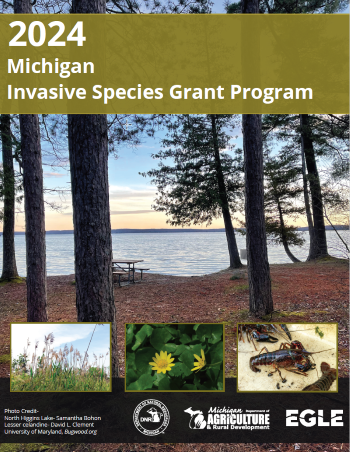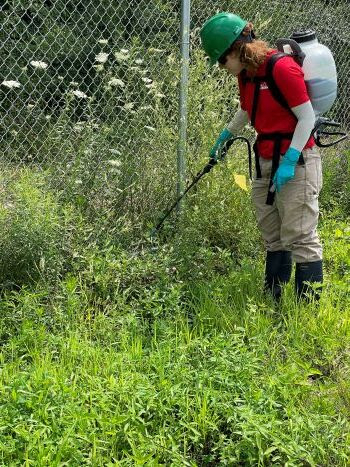

|
Michigan’s Invasive Species Grant Program is now accepting proposals for the 2024 funding cycle, with an anticipated $3.6 million available to applicants.
The program – a joint effort of the Michigan departments of Natural Resources; Environment, Great Lakes, and Energy; and Agriculture and Rural Development – is celebrating the 10th year of the statewide initiative launched in 2014 to help prevent, detect and control invasive species in Michigan.
|
Invasive species are those that are not native and whose introduction causes harm to Michigan’s economy, environment or human health. “The challenge of harmful invasive species in Michigan is bigger than any one department in state government,” said EGLE Director Phil Roos. “It takes cooperation, education, and effective tools like the Michigan Invasive Species Grant to counter the threat these invaders pose to our environment, economy, and well-being – on land and in our waters.” |
The 2024 grant program handbook outlines program priorities and application guidelines. Applicants also can take advantage of a webinar on Tuesday, Sept. 10, at 9 a.m. to learn more about general grant information, the application process and 2024 priorities.
Both the handbook and webinar registration information are available at Michigan.gov/MISGP. A recorded version of the webinar will be available on that webpage after Sept. 10.
This year, the program is seeking proposals for projects to address the following priorities.
Applicants should review the full list of priorities provided in the MISGP Handbook and communicate with technical contacts if questions arise. |
The Michigan Invasive Species Grant Program supports projects throughout the state that prevent, detect, manage and eradicate invasive species on the ground and in the water. Total program funding is set by the Legislature and the governor during the annual budget cycle.
In the last 10 years, the program has awarded over $36 million to 269 projects, resulting in education, identification and management of invasive species including hemlock woolly adelgid insects, European frog-bit plants and mile-a-minute weed. Because of this program, more than 664,000 acres of land and water have been surveyed and approximately 53,000 acres have been treated for invasive species.
Highlights of the 2023 invasive species program are available in the Michigan Invasive Species Program Annual Report, which includes program-funded projects.
Regional CISMAs operate in all of Michigan’s 83 counties, assisting the public in identifying and managing invasive species. Contact information for individual CISMAs can be found at Michigan.gov/Invasives in the Take Actionsection.
Local, state, federal and tribal units of government, nonprofit organizations and universities may apply for funding to support invasive species projects in Michigan. Full project proposals are due Nov.1. The award announcement is anticipated in March 2025.
Grant requests for general projects can range from a minimum of $25,000 to a maximum of $400,000. CISMAs can request up to $70,000 for annual implementation of prevention, detection and control activities and up to $40,000 for specific outreach and/or survey and treatment projects.
There are no match requirements for the program, and match documentation will not be accepted as part of the application.
Competitive applications will outline clear objectives, propose significant ecological benefits, demonstrate diverse collaboration and show strong community support.
All applications must be submitted through the MiGrants online system. Applicants can access the system at MiGrants.Intelligrants.com or follow the link at Michigan.gov/MISGP.
|
|
Michigan's Invasive Species Program is cooperatively implemented by the Michigan departments of Agriculture and Rural Development; Environment, Great Lakes and Energy; and Natural Resources.
Contact: Joanne Foreman, 517-284-5814 or Erin Campbell, 269-300-9698